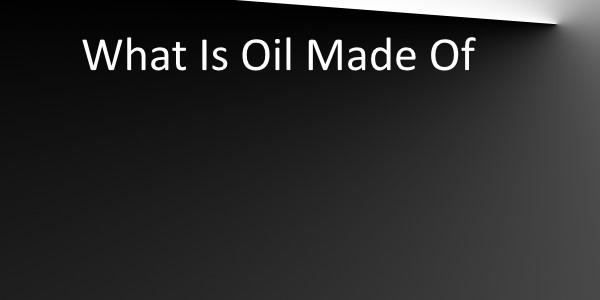
What is oil made of? Like all fossil fuels, oil is made by applying heat and pressure to organic material in an anaerobic environment. The most commonly accepted theory states that oil is created from an accumulation of simple life forms (plankton) on the seafloor. This layer of dead plankton accumulates on the seafloor, and is mixed or buried by sediment. Over time this begins to create an anaerobic environment at the lower layers of this sludge. Without oxygen, these organic organisms cannot decompose as they would normally.
They do however change in chemical structure over time. After a long period of applied heat and pressure in an anaerobic environment, the once-plankton begin to transform into a waxy substance known as kerogen. Kerogen is pretty cool, because it is a solid substance made of primarily carbon that does not dissolve using traditional organic solvents.
As far as I’m aware, there are 4 different categories of Kerogens. The first type of kerogen is called sapropelic kerogen. Sapropelic is a contraction of two ancient greek words which approximately means “putrid mud”. It is created in most instances by lacustrine algae and is formed in anoxic(low oxygen) lakes or other unusual environments. Sapropelic kerogen is handy as it is easy to produce liquid hydrocarbons from them.
The second type of kerogen is called Planktonic. Planktonic kerogen is common in many oil shale deposits. As its name suggests, planktonic kerogen is the result of dead marine life, primarily plankton. When burnt through a process called pyrolysis – which is also a term used in the making of charcoal, along with a wide variety of other chemicals – Planktonic kerogen forms less oil that sapropelic kerogen. It is however still considered a viable potential oil source.
The third type is called sulfuric kerogen. Sulfuric kerogen is very similar to planktonic, but it has a significantly higher sulfur content. I should clarify and state that planktonic kerogen also has a high sulfur content, but it is lower than sulfuric kerogen.
The final type of kerogen is simply referred to as residue. Residue is not used in the production of petroleum.

What is oil made of? Now we know! Ok great, but what causes the different types of fossil fuels?. For example, why does some biomatter become coal, and other bio matter become oil? That is a great question. There are a number of factors that contribute to this difference, but it seems that one of the biggest factors is a class of complex organic polymers known as lignins. Lignin is most commonly found in wood and bark, but it can also be found in some of the support tissues of vascular plants. Deposits with large amounts of lignin tend to produce coal, while deposits with less lignin transform into petroleum. To summarize, if the organic matter is comprise of higher plant forms such as trees, the organic matter tends to produce coal when put through the fossil fuel process.
If you can’t get enough information on oil, check out our other article on the most valuable uses of oil!